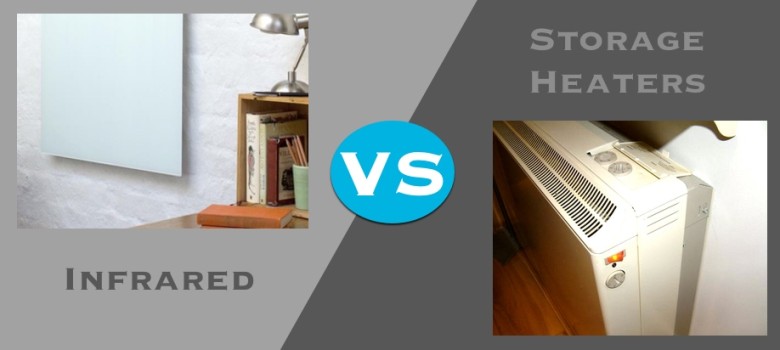
Many people rely on electrical heating to keep their homes nice and warm during the colder winter months. Despite the fact the cost of a unit of electricity is 3x the cost of gas (so electric heating is far more expensive than gas) there are a few benefits of electric heating. Firstly it is easy to install and maintenance is very limited – you are never going to get a leak from your electrical heating system! Also you can localise your heating much more effectively without the need for sophisticated heating controls. You can simply turn your electric heating on in the room you are currently sitting in. Obviously this is pretty basic, but for many people it is all that is required.
In the UK, there are a huge number of properties that are heated with storage heaters, but infrared heating is becoming more and more popular as an alternative electrical heating system. In the following article we are going to do a bit of a comparison between the two different types of heating system.
The history of storage heaters
Storage heaters were first introduced in the 1960/1970s when the UK invested heavily in nuclear power plants. These power plants couldn’t be switched off, so continued to produce electricity 24/7. Now as you might imagine, the demand for electricity between midnight and 6am is far lower than the rest of the day because most of us are asleep. It was a result of this lack of demand (but plenty of supply) that led to the formation of the Economy 7 tariff. This was a dual electricity tariff, where one is charged less for electricity during the night (normally midnight through to 7am) and then a higher tariff comes into play during the day (from 7am through to midnight).
The idea was that a storage heater would charge during the night and then release the heat during the day. The electricity at night would be used to heat bricks in a very well insulated core – this heat was then allowed to escape based on the occupant’s requirement. Over the years storage heater technology has improved immeasurably, with improved efficiency and far less heat leakage. This leakage was one of the major downsides of older storage heaters (heat was often lost during the day, so if you wanted to warm your house in the evening the storage heaters had lost their charge).
The history of infrared heaters
Infrared heaters were introduced around the same time as storage heaters, in the 1960s/1970s. These heaters tended to use near infrared, the radiation closest to red on the light spectrum. These could carry a large amount of heat, (which you may have experienced if you have ever stood under one of those bar heaters), and were often installed to replace coal fires. The issue with them is they could get dangerously hot (approximately 13000c) so were not ideal in a residential setting. They were more commonly found in workshops and factories. With the introduction of full central heating systems in the 1970s, demand for near infrared heaters all but died.
In the late 1990s/early 2000s an increasing amount of research was carried out looking at far infrared. Unlike near infrared, which glows orange/red and is extremely hot (approximately 13000c), far infrared heaters emit much lower temperatures, (typically 1000c) and there is no visible light (the elements don’t glow). While the heat is much less intense, far infrared is absorbed especially well by humans, because we have such high water composition. As such, these have become increasingly popular as an alternative to storage heaters.
How do storage heaters work?
Storage heaters are typically composed of clay bricks or other ceramic materials. These have electrical heating elements inside them that get hot when electricity passes through them, which in turn heats the bricks. As discussed, in an ideal setup, the storage heaters are charged during the night and then this heat is released during the day as convection heat. Convection is where you feel warm because the air is warm; this is the type of heating found in most homes since radiators also use convection to provide warmth. The downside is that if it is cold or draughty, convection heat tends to be lost very quickly.
How do infrared heaters work?
Unlike storage heaters/radiators that produce convection heat, the reason you feel warm when you stand in front of an infrared heater is radiant heat. Radiant heat passes through the air and heats solid objects directly. The sun heats through the same mechanism and this is the reason you can still feel nice and warm if the sun is out even in the middle of winter. It is also worth pointing out that infrared heat is 100% safe – people can get nervous about radiant heating because it is also known as infrared radiation (a word that understandably rings alarm bells). There really is no need to worry though since it has nothing to do with either ultraviolet radiation (which gives you a sunburn and damages your skin) or atomic radiation (the kind from a nuclear bomb). Far infrared is completely safe and in fact there is research to suggest it can have positive impacts on your body.
The fact that infrared heats solid objects rather than the air means that to get an equivalent level of thermal comfort you can use a much lower rated infrared heater compared to a storage heater. Typically, 1000w of storage heater would provide the same level of heating as 570w of infrared heating. This could lead to big energy savings.
 The cost of storage heaters
The cost of storage heaters
We get a huge amount of interest from people who currently have storage heaters looking to replace their old units with new ones. They are often surprised though when we talk about the costs associated with replacing them. The Dimplex Quantum storage heater range starts at about £700 (for the unit – not including installation by an electrician). These are top of the range units – there are obviously cheaper types of storage heater available – but even so the starting prices are about £350.
The cost of infrared heaters
There is a huge range of infrared heaters – so the price really depends on the brand and the look of the panel. If you want a top of the range mirror panel for a 200w unit you are looking at a price of £400, but for a big 1200w unit you are looking at a list price of just over £1,000. If you want an entry model far infrared heater then you can get your hands on one for just £200.
The look of storage heaters compared to infrared heaters
There really is only one winner here – and that is the infrared heaters. Unfortunately based on the fact storage heaters need to have big ceramic/brick cores, they will always be pretty bulky. Infrared heaters on the other hand can come in many different styles depending on what you are looking for; it is even possible to get a family portrait or your favourite photo printed on them! Most infrared heaters are very thin (normally just 2cm thick) which means they don’t take up nearly as much space as storage heaters, so if space is at a premium then infrared is definitely the way to go. They can also have dual functionality – for example I have an infrared mirror in my bathroom and not only does it provide heat, it obviously also acts as a mirror (without steaming up!).
The future of storage heaters
Personally I think the Economy 7 tariff won’t be around for that much longer – I think the premise of them is great and if you are willing to invest in a top end unit then you will have a great heater with great controls. The truth is though that as the nature of our electricity mix changes (with more focus on renewables and gas) there will be less electricity available at night as the energy producers will look to match supply with demand. Most of our nuclear power plants and coal power plants are due to close in the next 10 years and these are the plants that we can’t switch off at night, so unless they are going to be replaced with like for like plants then Economy 7 will sadly be no more!
As such, my advice would be to move away from storage heaters – unless you are creating your own electricity (from solar for example). The units themselves tend to be very high capacity e.g. 3kw or more, so while they are okay to charge under the current Economy 7 tariff because you are charging them during the night on the cheaper tariff – if that gets scrapped then they are going to be extremely costly to charge.
The future of infrared heaters
Infrared heaters are an efficient form of electric heating, therefore their future seems pretty secure. Electric heating is never going to be for everyone. Many people in the UK have central heating systems (boilers and radiators) and to be honest we would never recommend someone rip out their central heating system and replace it with any form of electrical heating as it will likely cost them more to run in the future. However saying that there are a huge number of properties that are simply not able to have central heating systems.
For those with ageing storage heating who are considering replacing them, I would certainly recommend looking at infrared simply because they are smaller than storage heaters (and in my opinion more stylish), but perhaps more importantly they are far cheaper to run.
If you have any questions on either of these types of heating systems then please drop a comment in the comments section at the bottom of this page and one of the team will try to come back to you ASAP.
Installing infrared heating
Are you thinking about installing infrared heating in your home? We have scoured the country for the best tradespeople, so that we can make sure we only recommend those we really trust.
If you would like us to find you a local installer to help install infrared heating in your home, just fill in the form below and we will be in touch shortly!

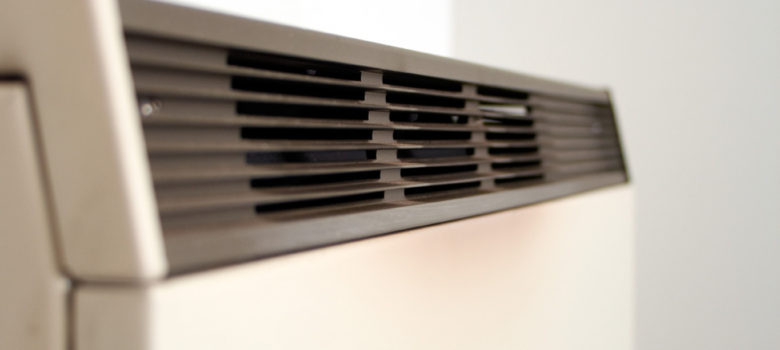



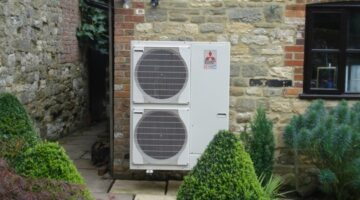

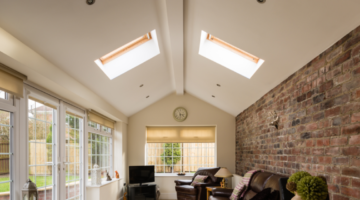
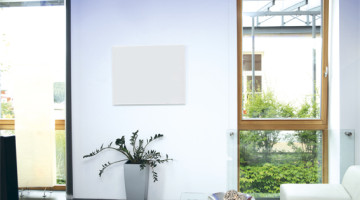





Is there any funding available to replace old storage heaters with infrared heaters?
Hi Nick, unfortunately nothing nationwide. However, some have managed to get their hands on loans based on the carbon savings that the infrared heaters produce so that is always worth a try.
Hi. My mother has a flat with storage heaters. One of them no longer works, and needs replacing. This unit is in the hallway, and so people tend to be passing through rather than sitting in one place as with a living room.
Is infra-red still likely to be a good solution – even though people won’t be there much of the time to be warmed by the radiant heat?
Thank you.
Why not get it fixed?
Should be easy to do for any good electrician!
Hi Graham. It sounds like infrared panels might be perfect for you! Infrared will keep you warm when you’re there and won’t waste energy when you’re not. One of the great things about infrared panels is that you can easily use them with a control system – you could even use motion sensor. Give us a ring if you want any more information!
Is there an electric tariff available for infrared heaters?
What are the typical running costs for a 7 panel heater system
Hi. Would infrared heaters give me a better EPC rating than multi fuel stove heater (currently just one stove in the house and no other heating)? I am worried that adding a proper heating system to the house will actually work against the current EPC rating. Thanks.
As IR only heats objects , not air …
– would you feel cold as soon as you get out of the direct line to the unit , eg moved to the other end of the sofa ?
=how can you regulate it to keep the room warm , when thermostats work by detecting air temperature ?
Hi Mark, so the closer to the panel you are the warmer you feel, but the infrared from these panels travels about 3m, so the difference in temp from moving down the couch should be tiny. As the heaters emit the infrared, the solid objects warm up and release the heat back into the room, so the air temperature will increase, but you will be thermally comfortable at a lot lower temperature (as per the reading on the thermostat) compared with a convection heater e.g. just 16-17 degrees.
Do infrared heaters have to be positioned so they face you in your armchair?
IF you change to infrared from night storage heaters what is the best way to heat you water and would you replace in every room in the house?
Many thanks,jon
You say that with the demise of nuclear and coal plants there will be no surplus energy at night but much of the new green power is from wind farms which will surely also produce excess electricity at night, at least until they can find a way to store it which is some way off.
I have been researching electric heating options for a while as my flat in Watford has several knackered storage heaters. I have htree rooms in the flat. Of all the research I have done, this website knocks all the others for six. It finally tells me what I have thought but not been able to quantify i.e. that storage heaters are not a future-proofed option. Many thanks for putting the script together. Clear, concise and well written. Bravo!
Thanks Anthony – that is the kind of comment we like to receive!
I live in a 3 bedroom house where electricity is our only fuel (no gas main). I tried infrared heaters few years ago as I was fed up with storage heating. It cost a fortune. I’ve since gone back to storage heaters and use the infrared as secondary heating.
Hi Roger, do you still use Economy 7 – as this would make the infrared very expensive to run!
If electricity is your only option, then it is worth considering a Heat Pump. This would be a long term solution along with a well insulated house. John
I have a 3 bed detached cottage built circa 1800. It has clay lump walls and poor thermal insulation. Am considering replacing Economy 7 storage radiators with a well sourced infra red system, keeping conventional water heating. I would welcome comments on suitability and potential impact on saleability of property in the future.
Can an entry model be painted on with acrylic or oil paint as I would like
Can the entry model panel be painted on with acrylic or oil paint?
I currently have electric infrared heating installed in my 1892 semi (no cavity walls) which is proving expensive to run, whilst not really keeping us warm, especially in the bigger rooms in the house. I was considering adding storage heaters to the larger rooms (as I also have solar pv generating electricity in the daylight hours) but wondered if you had any other suggestions?
The IR heating was installed when my old oil boiler gave up the ghost and I was sold the idea of IR heating as a more efficient and modern form of heating, in conjunction with the solar. I am disillusioned with the result and running out of ideas what to do on a limited budget.
I have also installed Wallrock KV600 on all external walls to try and prevent some of the heat loss through the walls, since I couldn’t entertain the cost of external wall insulation.
I had all my old storage heaters replaced last year with Dimple. quantum but I was cold last winter. They installed 2 heaters less than before. There is no gas in the village. Should I get someone to ensure that the heaters were installed correctly or look at additional heating i.e. infrared or storage ? I am a pensioner so feel the cold. Thank you
Hi Dianne,
I’m sorry to hear that you’ve been feeling the chill!
Have you made completely sure that you’re using the controls right and know exactly how all the settings work on the heaters?
Many thanks,
Harriet
Hi there, what do you guys recommend as better? I am moving into a 6 bedroom house above a pub. It has never had heating and central heating just isn’t an option right now. I’m looking at both types. what would you suggest?
Hi Kate,
In general, we prefer infrared heaters, as they work with every tariff and create a more comfortable form of heating. The only time we advise storage heaters above infrared is when people are trying to improve their EPC rating, where they are the only electric heating system that is counted.
Harri
Fantastic article. My old storage heaters are costing an absolute fortune so when I came across this website it was such a relief. Now looking at cheaper alternatives hopefully.
Hi, we’re thinking of switching from our current storage heaters to infrared, mainly in order to maximise the space in our flat. Being a musician, I have quite a lot of music and electrical equipment in the flat (guitars hanging on the walls, electric piano, computer, speakers, television etc.) Seeing as mobile phones stop working, if they’re left out in the sun on a hot day, I’m slightly concerned as to whether infrared panels might overheat and damage the equipment, if it works by heating objects directly. Is this likely? Any advice would be much appreciated. Thanks!
My dad lives in the north of Scotland and has a Total Heating Total Control meter for his storage heating. His house is a relatively modern build and all electric, but it’s costing him a fortune. Am wondering if anyone knows anything about this tariff working with far infrared heaters as they seem like a good option for him to change to. Any advice would be extremely welcome, this is proving to be a struggle!
Hi
You say that infrared are more energy efficient but they drop the EPC rating significantly where as dimplex quantum improve the rating. Please advise
I have 19080s vintage storage heaters – they work but use an immense amount of electricity I believe they are very inefficient – and almost impossible to control the temperature, they do not react to external changes at all, so its often too hot/cold. I am looking at Far IR Heaters as they are more efficient and controllable they should result in a lot lower running costs? As IR heats objects do I need better EWI?
Can someone please tell me the truth about the running costs of far infrared heating with thermostatic controls? We have no gas in our area so thought far infrared would be a cost effective option over old storage heaters, so recently bought some. They have been working for a month and the house is the warmest it’s ever been, but it is costing a lot. We aren’t having to light the log burner which is going to save at least £70 month but that is now going on the electric! I also don’t understand why Far infrared heating would adversely affect an EPC? We still have an Economy 7 meter but the energy price hike is going to be the problem in the winter. We might have to turn some of the heating off because of the cost. It’s all very well advocating green energy but at the current prices, it’s too expensive to run unless you have a hefty bank balance. Herschel’s brochure has a page showing the comparison between mains gas and other forms of heat, putting their heaters second in the list, presumably based on the up front costs of installation, against installing a plumbed in boiler system, or heat pump.
Surely your running costs would reduce by switching away from an Economy 7 tariff to a single rate tariff? The IR heaters do not benefit from the cheaper (E7) overnight rate, whilst presumably using the much more expensive (E7) daytime rate virtually the entire time they are in use. To me, it makes no sense at all to use IR heaters with an E7 tariff, but perhaps I’m missing something?
The problem with buying an efficient heater is that you use it more, so it doesn’t save money at all – you use the heater more, so it ends up costing you the same amount of money. I wanted to change my central heating system for infrared panel heating, but decided not to. The central heating is put on about 3 hours a day, but if I bought the infrared panel heaters at a considerable cost, I would just keep them on all day. It defeats the purpose of buying them to save money.